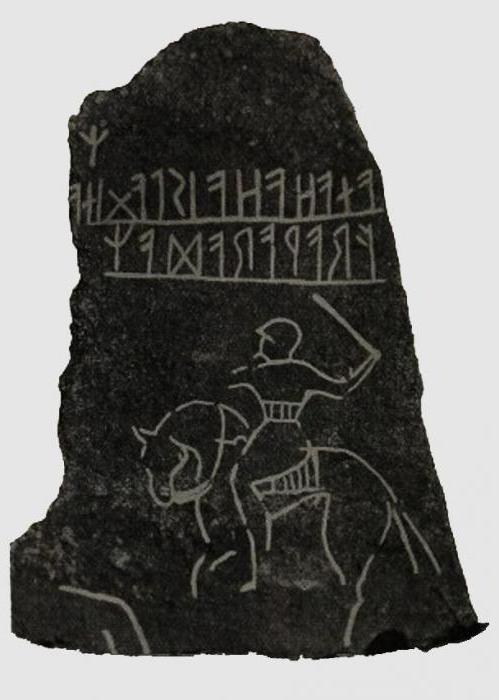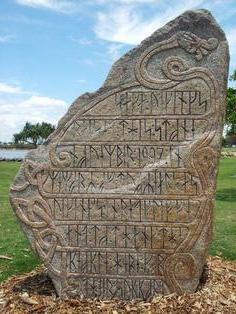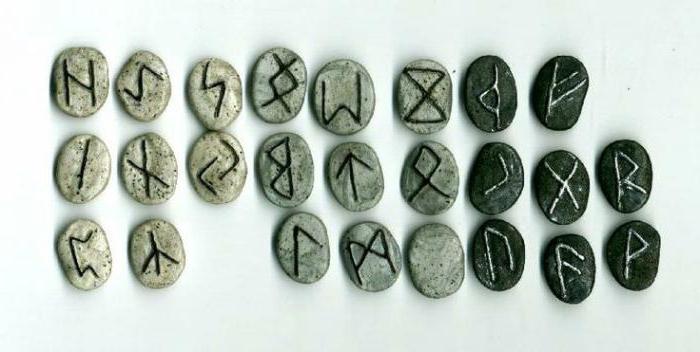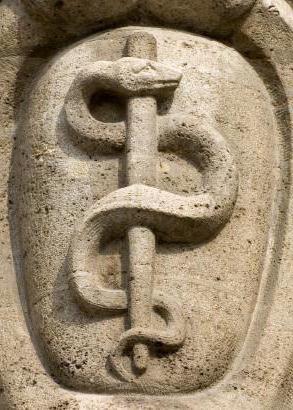Many people, when buying a funny pendant or something similar, do not even understand what exactly this image means. Vedic signs and symbols have their own specific meaning. They were used to change things and influence the future. For example, some signs are, others help in magic, etc.
Vedic symbols and their meaning
Initially, we will make a reservation that the described symbols will correspond to the picture and go in order (from left to right). Main Vedic symbols and their gods:
The bee has as much in folklore from around the world as it does in gardens in the summer. Bees have appeared in human art forms almost as soon as humanity learned how to create them; they are depicted in ancient rock art from around the world, such as from the Paleolithic in Spain and the Mesolithic in India, and are mentioned in some of the earliest forms of writing in the world.
Bees appear everywhere from poetry to prose and even in our everyday sayings: we can be "busy as a bee", we "make a bee" for things, we can get a "bee in the hood", and the term "The Bee's Knees" now famously refers to something fabulous, although initially he mentioned something small and insignificant. Bees are associated with magic, love, hard work and creativity. The mere presence of bees on a farm or near a dairy or factory has been said to increase productivity.
- Agni. Symbolizes the sacred fire.
- Altar boy. Means the reconciliation of the gods.
- Bogovnik. Personifies eternal strength and the power of the Higher powers.
- Bogodar. Means the protection of the Heavenly Gods.
- Vaiga. Represents Goddess Tara.
- Valkyrie. Preserves wisdom and nobility.
- Vedaman. Symbol of wise men who keep knowledge.
- Vedara. An assistant in the application of ancient knowledge.
- Velesovik. Heavenly amulet.
- Vseslavets. Protects family relationships.
- Garuda. Symbolizes the Fire Chariot of Vaitmara.
- Thunderstorm. Allows you to control natural phenomena.
- Gromovik. The opposite of the previous sign, but more often related to martial arts.
- Duniya. Represents the heavenly and earthly fire of life.
- Doukhobor. Refers to the natural inner fire of life.
- Spiritual Swastika. A strong amulet.
- Spiritual Power. Represents constant spiritual transformation.
- Soulful Swastika. Used to concentrate the Higher powers of Healing.
- Dhada. This Slavic Vedic symbol means the inner and outer human essence.
- Bunny. A male symbol indicating the renewal of life of the Clan of the Great Race.
- Star of Lada-Virgin. Connects the Force of Nature and Divine Forces.
- Znich. Symbolizes the Fiery Heavenly God, who guards living fire.
- England. Represents the primary life-giving fire of creation.
- Source. Means the purification of heavenly energy.
- Colard. Indicates the greatness of the Mother of the Damp Earth.
- Kolovrat. Symbolizes the rising sun.
- Kolohort. Means "round wolf".
- Kolyadnik. The symbol patronizing the God of Kolyada.
- Cross of Lada the Mother of God. It also personifies harmony.
- Marichka. Heavenly light or "shooting star".
- Molvinets. Increases the power of words.
- Navnik. Means the Spiritual Paths of a person.
- Narayana. Symbol of the Light Spiritual Path.
- Heavenly Boar. Means the connection of past and future.
- Heavenly Cross. Is a talisman.
- Novorodnik. It is a reflection of fiery heavenly power.
- Oberezhnik. Represents health and happiness.
- Fireman. Symbol of the Most High God-Kin.
- Ognevitsa. Amulet of the Heavenly Mother of God.
- Overcome Grass. Protects against various diseases.
- Austinite. Protective symbol.
- Salt it. Means the setting Sun-Yaril.
- Radinets. This symbol is intended for newborns.
- Rasich. Means unity and strength.
- Ratiborets. Symbol of masculinity and strength.
- Rodimich. Preserves the wisdom of the ancestors.
- Rodovik. This Vedic symbol guards the line between the dead and the living.
- Rubezhnik. Indicates the boundary of the Universe.
- Ryzhik. Symbol of pure Light.
- Rysich. Amulet from dark forces.
- Sadhana. Symbolizes the desire for success.
- Wedding party. Means the connection of two genera.
- Swadha. Depicted on the walls of the altar, where a living fire burns.
- Swaor. The Eternal Cycle of Life is shown.
- Svaor-Solntsevrat. Indicates the constancy of the movement of Yarila-Sun.
- Svarga. Personifies the entire Universe.
- Svarozhich. Means the power of God Svarog.
- Swastika. Symbol of the eternal cycle.
- Swati. Represents Perun's Path.
- Matchmaking. Amulet symbol.
- Svetoch. Means the connection of the extraterrestrial and terrestrial.
- Svyatovit. Represents the connection between heavenly fire and earthly waters.
- Svyatadar. The symbol is dedicated to the country of Arctida.
- Christmastide Symbolizes rebirth and insight.
- Symbol of the Race. Represents the unity of the Four Nations.
- Symbol of the Family. Divine heavenly symbolism.
- Slavets. Is a women's amulet.
- Solard. Protects fertile and life-giving force.
- Solar Cross. Symbolizes strength and prosperity.
- Solon. This Vedic symbol of the Slavs is dedicated to the sun.
- Stribozhich. Symbolizes God, who controls the winds and hurricanes.
- Suasti. Means the movement of life.
- Fash. Symbolizes protective, protective spiritual fire.
- Fern Flower. Represents the fiery purity of spirit
- Charovrat. Protects against evil spells.
- Yarovik. Symbol of Yarila the Sun.
- Yarovrat. Symbol of Yarila the Sun.
Every culture of antiquity left behind large number characters. They arose as a way of depicting deities, supernatural and ordinary phenomena in the life of the people. Most often, symbols were directly related to religion, with the help of which the bearers of a particular culture learned and explained the world around them. Intricate images were used in various rituals. Many of them were solved by historians and archaeologists only after lengthy research.
Bees create honey, create noise, pollinate, and the queen bee, who gives birth to her subordinate bees, is the embodiment of creation itself. And, if you think using the term "honey" in terms of love is something from the age of pop songs, think again, the Sumerians and Egyptians did it in poetry about four thousand years ago!
Vedic symbols and their meaning
For Viking mead, made from honey was one of the main ingredients, along with Kvasir's blood, Mead of Poetry, a magical brew that could give the gifts of wisdom, poetry and immortality to anyone who drank it. In many parts of the world, bees are believed to provide the gifts of poetry, eloquence and song to humanity. For the Greeks they were the “birds of the muses.” Bees are also credited with understanding many languages. IN Ancient Egypt the bee, in particular the bee, was one of several royal symbols and was used consistently for over four thousand years.
Ancient Slavs
They are known for their love for various images. Ancient symbols of this people can be found on a vast territory from the Volga to Germany and the Balkans. Even before it was divided into tribal unions and groups, common drawings appeared in everyday life. These include the symbols of Ancient Rus'.
The Sun played a great role in the images. There were several signs for him. For example, it was a caroler. It was worn mainly by men who wanted to gain wisdom in battle and everyday life. God Kolyada was responsible in the Slavic worldview for the constant renewal of the world and the victory of light over darkness.
The bee represented the pharaoh's sovereignty over Lower Egypt, and the pharaoh was often referred to as "He of the village and the bee." To the ancient Egyptians, the pharaoh was the king of God, and this connection between Bees and Deities appears to be like religion itself. Bees were supposedly born from the tears of the Sun God, Ra. In times past, many people were convinced that the foam queen was actually the king. If a swarm of bees settled on a person, it was believed that they would achieve leadership or even kingdom.
In Poland, Michel Wiswinski was chosen as king because bees landed on him during an election. IN Ancient Greece the priestesses who visited the Demeter Goddess were known as Melissa, meaning "bees". This name Melissa for priestesses is also used by several modern groups Goddess to honor the bees and their Goddess as their "Queen Bee". The original Melissa was a Greek nymph who cared for the infant Zeus, protecting him from his father Cronus, who planned to eat each of his descendants.
Overcome grass was used as a talisman against evil lower spirits. It was worn on clothes, armor, weapons, etc. The symbols of the ancient Slavs included the ratiborets. It was the sign of a warrior, for whom the most important thing was courage, bravery and honor. It was believed that the warrior bestows these qualities on everyone who sincerely and passionately loves their homeland and home. Most often he was depicted using engraving - an art in which the Slavs knew a lot. Like many other ancient symbols, the ratiborets was a solar sign, a little like the Sun. In this series, the swastika stands out especially, denoting the eternal cycle of the Universe. The person wearing it recognized his allegiance to the higher forces of nature.
As punishment for protecting Zeus, Cronus turned Melissa into an earthworm; Later, the adult Zeus took pity on her and turned her into a bee. The Ancients had several Gods and Goddesses, such as the Lithuanian goddess Austeia and her husband Bibi Boris Babilos, the Roman goddess Mellonia and Slavic God Zosim; bees were also associated with other Deities such as Artemis, Aphrodite, Brighid, Rhea and Vishnu.
Bees of all kinds were considered to have special knowledge and the ability to tell the future. IN Greek mythology The god Apollo taught how to see in the future Treya: three pre-Hellenic bee goddesses, Melaina, Cleodora and Daphnis. According to folklore from Britain and Ireland, if a bumblebee swoops around your house or at your window, it brings news that a visitor will soon arrive, and the bumblebee will even supposedly tell you the gender of the guest if it has a red tail; the visitor will be male if the tail is white , the visitor will be a woman.
The symbols of the ancient Slavs were also identified with the family - the smallest unit of any society. It was a wedding ceremony, meaning the fusion of body, soul, conscience and spirit of those who enter into a marital union.
Symbols of the elements among the Slavs
Many ancient symbols came from the tradition of worshiping fire as the greatest element. Several of these can be cited. Yarovrat was worn by worshipers of God Yaro, who, with the help of the powers of fire, controlled the weather, which means he was in charge of the harvest. Therefore, those wishing to obtain a large number of crops used this sign. Doukhobor also symbolized fire, but only internal fire. This was the symbol of the flame of life. If a person in the tribe fell ill, he was covered with bandages with Doukhobor. The thunderstorm helped protect churches and houses from bad weather, thunderstorms, storms and other disasters.
Symbols of the elements among the Slavs
However, if someone killed a visiting bumblebee, the visitor would bring nothing but bad news! Bees symbolize wealth, wealth of knowledge or wealth of luck, and the meaning of wealth in a financial sense. In Wales it was very lucky if bees of any kind were found at or near your home, as they were said to bless it with prosperity. Finding a bumblebee on a ship is good luck. If a bee lands in your hand, it supposedly means that money is coming your way. According to Irish and British folklore, you should never buy bees with normal money, only gold coins, although if possible it is best to exchange them so as not to offend them or receive them as a gift, so that no money changes hands at all.
The symbol of the earth among the ancient Slavs is solard. The soil was also associated with the cult of motherhood, which was practiced by some tribes. The prosperity of the land meant a stable growth of food and a satisfying life for the family.
Runic alphabet
Scandinavian runes were used by numerous Germanic tribes. They had a developed mythology with their own unique images associated with the harsh living conditions of this people. Runes were not only symbols, but also written signs. They were applied to stones to convey one or another message. They wrote epic sagas telling about the history and myths of the Germans.
If one bee enters your home, it is traditionally a sign of good luck coming to you, usually in the form of money, but for a bumblebee to die in your home brings bad luck and poverty. Even in modern folk magic, bumblebees serve as a charm for health and wealth. Bee stings are said to treat pain from rheumatism and arthritis, and honey is used in folk magic to treat almost every ailment that has ever plagued humanity. The Witchcraft Museum in Boscallem is charming, promising health, happiness and good fortune, which features three ceramic bumblebees in a blue bag - a huge improvement on the old folk charm it is based on, found in Dawlish, which unfortunately featured three dead bumblebees in bag.
However, each sign, if considered separately, also had its own meaning. The runic alphabet consists of 24 runes, divided into three rows of 8 each. About 5 thousand surviving inscriptions in this amazing language have been found in the world. Most of these artifacts are found in Sweden.

Bees have long been associated with witches and witchcraft: one Lincolnshire witch was said to have a bumblebee like her familiar animal, another witch in Scotland allegedly poisoned a child in the form of a bee, and in Nova Scotia a male witch was accused of murdering a cow by sending a white bumblebee to land.
Omtsy has been read in the flight of bees, as well as the flight of birds, for centuries. When bees swarm, it is usually considered a cruel omen. If bees swarmed onto a dead or rotten tree, it was said that it foreshadowed the death of one of the relatives who belonged to or lived near the tree. When bees become lethargic, it foretells bad luck, and if they are busy buzzing, then they create good fortune. Many ancient writers, such as Aristotle and Pliny, believed bees to predict the weather.
Examples of runes
The first rune, Fehu, meant livestock, and in a broad sense - any personal property of a German. Uruz symbolized a bull or bison. Thus, the difference between the first and second sign was that in one case a domestic animal was meant, and in the second a wild and free one.
Thurisaz meant a sharp thorn or hammer of Thor, one of the main gods of the Germanic pantheon. It was used to ensure that the person wearing it had good luck, as well as protection from hostile forces. Ansuz is an image of open lips, that is, a replica or spoken wisdom. In addition, this is a sign of caution, since the Scandinavian peoples believed that smart man will never be rash.
There are many traditional rhymes in German, French and English languages, which describe how they supposedly do this. “When the bees fly within a wing's distance, their days are warm and the skies bright, But when their flight ends at their home, stormy weather is sure to come.”
Another rhyme, probably the most famous, tells us. If a bee buzzes over a sleeping baby in its crib, it is said that the child will live a long, happy, healthy and prosperous life, and if a bee touches the baby's lips, it will great poet according to Greek folklore If a bee lands on your head, folklore suggests that you will be successful in all your endeavors! There is a strange belief that virgins can pass through a swarm of bees without being hurt, and if bees nested in the eaves of a house, it is said that the daughters of the house will never marry.
Raido is the cart or path ahead of the wanderer. Ancient symbols and their meaning among the Germans often had double meaning. Kenaz is a sign of fire. But this flame is friendly. Most often, such a fire meant a torch that would warm a person and give him a feeling of comfort and homeliness.
The next two runes symbolize joy. Gebo is a gift and generosity. He was depicted as a sign of good intentions. If runes were used in fortune telling, then the Gebo that fell out was a great success for a person who was in for a pleasant surprise in the future. Ancient signs and symbols even now often become material for the occult ministries of neopagans. Vunyo means joy. It was often used in conjunction with Gebo. If it was written next to another rune, then this meant success or good luck in the sphere that the neighboring sign symbolized. For example, Vunyo and Fehu were an omen of a large increase in livestock.
Bee dreams have many meanings depending on what the bees are doing in the dream. If they swarm, it suggests that you will be overwhelmed or experience failure. To dream about being stung is to betray someone you know. However, if you dream of bees buzzing happily, then the dream foretells happiness the next day.
Like butterflies, bees are symbols of the soul and its ability to pass or fly between worlds in Egyptian, Greek and Celtic mythology. In one ancient Egyptian ritual in the Book of Am-Thuat, the voice of the soul is compared to the buzzing hum of bees, and in another ritual, Kher-Heb, the soul is referred to as “gathering like a bee, although it sees everything happening.” There are also stories, especially from Germany, where sleep souls leave their bodies in the form of a bee, which flies from the mouth, and if the bee is trapped or escaped, then the soul cannot return to the body. Bees also offered protection for the soul.
Some runes were synonymous with natural elements, their presence can be found in almost all peoples and cultures. For example, Laguz is a symbol of water, a lake, or even intuition in a figurative sense.

Development of runic writing
Interestingly, over time, common runes split into several alphabet variants for different nations, from the borders of the Roman Empire to the extreme polar north of Norway. The most common is the so-called Proto-Scandinavian version, from which all subsequent ones came. It was used until the 8th century AD, which corresponds to the Iron Age in these territories. Most often, such runes are found on ancient weapons, armor and roadside stones. Such symbols were used in magical and religious rituals in the future. Sacred and memorial inscriptions are still found in necropolises and thickets.
In the Hebrew ceremony of opening the mouth, there is the line "The bees, giving him protection, they make him exist." Bees are also associated with fairies, partly due to their winged nature, but also thanks to Ludovico Ariosto's 16th-century Italian poem by Orlando Furioso, which features good fairy with the very appetizing name of Melissa. From the Isle of Man comes a story of a group of fairies who, when they flew, made a noise like that of a buzzing bee. Bees, like fairies, are often considered guardians of the natural world due to their vital role in pollinating many plants.
IN Eastern Europe Gothic runes brought here from Scandinavia became widespread. They can be found even in Ukraine and Romania. After some Germanic people settled in the British Isles, they developed their own variation of this writing system. This was due to isolation from their former homeland and assimilation with the “natives” - the Angles, Saxons, etc. They acquired new runes, many of which began to denote double sounds in writing (linguists call them diphthongs). These have been preserved even in modern German.
Speaking to a bee, either a bee or a bumblebee, the harsh thought seemed to drive her away, just as she cursed. The bees had to speak in a very specific way. "Telling bees" is old English folk custom, where bees are treated as family members and are constantly updated. Many of us are familiar with the tradition of telling bees when someone in the family, especially the main bee keeper, dies, but traditionally all family news, including births, marriages, etc. And even news about visitors, the Bees said, as a courtesy, is a warning.
You need to be careful who told the bees: for example, only the bride should tell the bees about the upcoming wedding and not anyone else, no matter how good their intentions were. It was believed that failure to tell bees important news would cause them to fly away, die, or stop producing honey. In England and America, bees were even invited to weddings and funerals, and this they did not do, then food and drink because of the trail, or a piece of Wedding cake was left by the hive.
They are considered especially exotic. They appeared on a distant island, which was then considered the northwestern edge of the world. They are characterized by the use dotted lines. These runes were in use until the 14th century. As for the Scandinavian signs, they disappeared with the advent of Christianity in the kingdoms of Sweden, Norway and Denmark. The use of runes was considered heresy and was severely punished by the authorities.
This idea of talking bees goes much deeper than news of births, marriages and deaths. He returns to the idea that bees are messengers of the divine or another kingdom. In many parts of Britain, bees are known as "God's Little Servants" or "God's Little Messengers", and this idea of bees as messengers dates back to Greek mythology, where a Dryad once sent a message of love to Rowcus. In Welsh folklore, bees, like humans, were considered the only creatures that came from Paradise and were considered especially loved by God.
The sacred bee in ancient times and folklore. The Average Egyptian: An Introduction to the Language and Culture of Hieroglyphs. New York: Cambridge University Press. Los Angeles: University of California Press. Discovery of folklore of birds and animals. Dictionary of English Folklore.

Ancient Egypt

Another variation that exists in modern times is the cup of Hygeia with a snake. This girl was the daughter of Asclepius. The symbol has become an international sign of medicine.
Another image of a staff common in Greece and adopted by Rome is the Caduceus. This staff was used by heralds who announced the end of war between states (for example, between Athens and Sparta). Therefore, the Caduceus became used by both the Greeks and the Romans. The image migrated to medieval European heraldry.
Ancient love symbols in Greece included the butterfly. This beautiful insect associated with family harmony and happiness.









